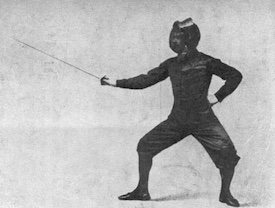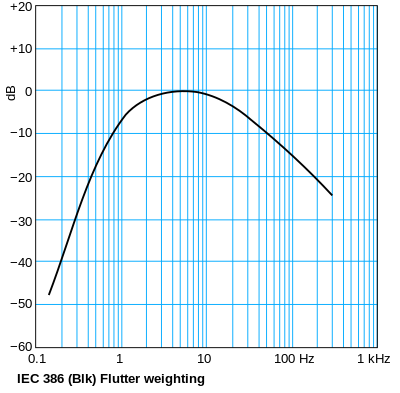You once again insist that if someone says they saw a pink elephant, we can't have an argument about that being impossible. Bigshot said and I am quoting again: "You have to have a perfectly calibrated flat playback response for this demonstration to be clear. "
!. That is a made up statement. He didn't measure the room. He is putting that sauce on top of the meal hoping it will make it palatable.
2. If you are going to jump on the throat of any subjectivists comment about what they hear, you need to show the same here.
3. Nothing destroys audio science more than poor advocates of it.
4a. When someone says there is a magical EQ that when you change midrange the high frequencies change, you need to speak up. 4b. When he says that is only heard in a "perfectly flat" response room, you need to doubly speak up. 4c. When he then says auditory masking is in play, then you need to speak up. 4e. This is all made up nonsense that has no place in discussion of audio science much less in a thread about audio myths. Or is it that the we are only interested in myths that subjectivists have and that we are so superior as to never be guilty of it?
I mean how wrong can a self-appointed objectivists on a forum can be before we speak up against it? I can't think of more egregious mistakes, myths and just plain nonsense than the above. Yet you are arguing with me about it? To what end?
Well, I see I aroused the beast.
1. I don't think the experience was made up. I think the anecdote lacks sufficient information for proper analysis. Can we at least agree that "perfectly calibrated flat playback response" is open to interpretation, since there is no such thing? If so, then can we agree that the statement provides no information as to what "perfectly calibrated flat playback response" means?
2. I will decide when, and on whom to jump on, thank you.
3. I disagree. Nothing destroys audio science more than myth. Myth is generated in several ways. I've found that, regardless of how much science I apply, my efforts to bust myth have been largely futile. But in this case we don't have myth, we have an observation without sufficient detail. Know the difference.
4a. Let's go back to the original post in question:
I have a friend who is a sound engineer who gave me a vivid example of it once. He stood to block what he was doing on the equalizer and asked me to listen and tell him what I heard. I listened and I heard the high end of the cymbals going in and out. Muffled, sharp, muffled, sharp. I told him the treble was going in and out. He turned away from the equalizer and showed me the band he was adjusting. It was a midrange frequency, and the adjustment he was making in the midrange was quite small and almost inaudible.
Anything wrong there, outside of a complete lack of technical detail? Do you not know that you actually can adjust an equalizer in one area of the spectrum and end up with a subjective change in the other with good quality equalizers? Sure you can! I don't know about his example, there's not enough information to replicate it, but the general principle is well known. So I chose not to discount it on face value, it's just an anecdote with no detail.
Then, he added this:
In music there are certain narrow bands that are very important... especially in the high end- consonants on vocals, high end on cymbals, etc. If there is an imbalance in the wrong place in the midrange, it can obliterate one of those narrow bands and the treble can be greatly affected. Treble is a big part of what people describe as "detail".
Anything wrong there? I would be drawn to "narrow bands" because bandwidth is not specified, and that causes a problem because we don't know what is meant by "narrow". Is it 1 octave? 1/2 octave? Less? It's not wrong, it's just not stated. But if we ignore "narrow" the rest of the statement is actually fine, if again, missing a whole lot of detail.
Then this:
If you have an equalizer, try to isolate the frequencies of the sisss sound of the cymbal and then adjust a narrow spike one octave below it. You'll find the spot. It's really quite amazing. Not at all intuitive.
Ok, still not enough data, but at least an invitation to experiment. Have you tried this? For real?
Then, unfortunately, this (the Edit is the unfortunate part):
I'd be more motivated to go to the trouble of making examples to prove things to you if you had honestly answered our questions about whether you kept the volume at normal listening level at all times when you "heard" the noise floor of 16 bit... So I'll just suggest that you take a solo violin recording, figure out where the important upper sheen is, calculate one and two octaves below that, and try applying some notch filters.
At least I tell you how it's done.
* EDIT: I just thought of something that is important. You have to have a perfectly calibrated flat playback response for this demonstration to be clear. If you have imbalances in around the frequencies you're working with, or in even octaves above or below them, the effect can get muddled.
If we take out the word "perfectly" and "flat", it starts to make sense though. And since we all know there is no actual "perfectly flat", we pretty much have to take that out just to make it make sense. Do you not agree that trying to EQ in a monitoring environment with poor response would, at very least, yield poor results? Would you disagree that at least basic room cal to a reasonably flat target curve is essential for good judgement when applying EQ? I believe that is the reality, it was just expressed in an exaggerated, and unrealistic way.
That's why I don't specifically take exception to his post. I recognize it as anecdote, and with a little understanding (he's not an engineer, or calibrator, he works in film sound production), and run the comments through that filter, his observation seems, at very least, to merit further investigation. I see no need to myth-bust the post, and yet I hold science in sound to the highest esteem. I would welcome the opportunity to investigate the observation.
But you go and accuse his friend of using a poor equalizer that is so sloppy as to have a reciprocal gain effect outside of its primary center frequency. Seriously, when was the last time you saw that happen on a mixing desk? Last time I was even aware of the phenomenon it was an ancient Baxandall tone control on a hifi device, and that problem was engineered out years ago. And then you pick on him for saying "perfectly flat". Come on, man, that's now just looking for a nit to pick. He later detailed that the room was well calibrated, and that the engineer in question had years of calibration experience. I might still have questions about that, like is he still using 1/3 octave EQ, or is he into PEQ, or perhaps something even better, like an FIR filter? And what is his personal tolerance, target curve, etc.? Well, we don't know, do we? Do you think all of this silliness is going to somehow magically generate more data for you to chew on? I doubt it. Or is it really just that all-fire important for the big dog to bark?
And then, clearly out of desperation, you decide to pick on me for somehow loosing my calling as a sound science professional. To that, I take strong exception, not that it will matter to you.
I think someone needs to take a chill pill. It might be me, or it might be someone else. I'm betting it's not me.






















 That is most excellent and best overview of frequency masking I have seen. Definitely must watch.
That is most excellent and best overview of frequency masking I have seen. Definitely must watch.


